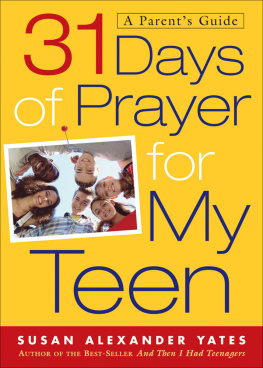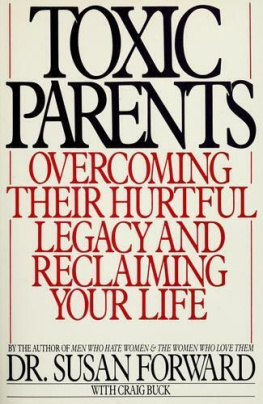First published in 1948 by Methuen & Co. Ltd.
This edition first published in 2018 by Routledge
2 Park Square, Milton Park, Abingdon, Oxon, OX14 4RN
and by Routledge
52 Vanderbilt Avenue, New York, NY 10017, USA
Routledge is an imprint of the Taylor & Francis Group, an informa business
1948 Taylor & Francis
All rights reserved. No part of this book may be reprinted or reproduced orutilised in any form or by any electronic, mechanical, or other means, now known or hereafter invented, including photocopying and recording, or in anyinformation storage or retrieval system, without permission in writing from the publishers.
Publishers Note
The publisher has gone to great lengths to ensure the quality of this reprint but points out that some imperfections in the original copies may be apparent.
Disclaimer
The publisher has made every effort to trace copyright holders and welcomes correspondence from those they have been unable to contact.
A Library of Congress record exists under ISBN:
ISBN 13: 978-0-367-15121-8 (hbk)
ISBN 13: 978-0-429-05519-5 (ebk)
TROUBLES OF CHILDREN AND PARENTS
BY THE SAME AUTHOR
THE NURSERY YEARS
INTELLECTUAL GROWTH IN YOUNG CHILDREN
SOCIAL DEVEL OPMENT IN YOUNG CHILDREN
ETC.
PARENTS have many problems. Those dealt with in this book are mainly the social and emotional difficulties arising in the development of children in their early years. The material is selected from a much larger bulk of actual letters from parents and nurses which I answered under the pseudonym of Ursula Wise in The Nursery World (published by Benn Bros.) during the years 192936.
The letters and replies have been shortened but not otherwise changed. I felt that the local colour giving the picture of the actual children and parents, and of the living relationship between them, was much more likely to make the replies helpful than any artificial summary of the questions could do.
Similar questions crop up every year with each new family of children. Not only so. Many of these problems are transient and normal, however trying to the parents they may be. They pass away with sensible handling and with the further development of the child. Worried young parents seldom realize this. It is often a great help to them to learn how frequent and typical such happenings are in the developing child. Often the mere lessening of anxiety in the parent through the knowledge that the early years of childhood are bound to have such storms and crises will do much to ease the difficulties of the parents, and hence of the children.
What I always tried to do in my replies to these anxious enquiries, and what I hope this book will do for its readers now, is to give parents and nurses some sense of childrens normal development and at the same time a greater awareness of the reality and intensity of the childs feelings in his various relationshipshow human he is, even as an infant, and how necessary it is to be aware of this if one is to treat him reasonably.
From the practical point of view I do not suggest that one can be as useful to parents through the medium of letters as by means of a first-hand diagnostic interview, but there are many cases of children with urgent problems of behaviour where circumstances do not justify or may even preclude a visit to a Child Guidance Clinic. This was especially so at the time when these letters and replies were written. Now there are many more clinics available. Even at that date, whenever I judged that first-hand diagnosis and advice was required, I suggested this to the parents and gave them the name and address of the nearest Child Guidance Clinic. (For want of space few of these letters are republished in this volume).
As regards the value of the book to systematic students, the material offered is not based on a representative cross-section of the population. The children described are mostly middle-class. But I have seen enough myself, and have received enough confirmation from those working in Clinics, Nursery and Infant Schools, and people familiar with children from poorer homes, to know that the same problems occur, with differences in local colour, in children of all classes. The difficulties described are mostly the typical difficulties of development during these years.
When I first drew this tentative conclusion and published it, some psychologists considered that I was describing what happened in a few abnormal cases, and that the ordinary child did not plague his parents in these ways. Since that date, however, trustworthy evidence has accumulated on every hand that this criticism was unsound, and that emotional difficulties are part of the normal picture of the developing child in his early years.
This point stands out most clearly in regard to difficulties in cleanliness and the need to ask what are the proper standards to be applied to the child. I have, however, left that series of problems out of this volume, mainly because of the very large number of letters raising the issuethese would require a volume to themselves; but also because I have already dealt with the problem elsewhere. (See list of references). Fortunately the climate of opinion on this subject has changed a little in recent years, and children now are not so often subject to the fantastic demands which parents generally had been taught to make upon their babies at the time when I began this work in The Nursery World.
Many other problems dealt with at some length in the original correspondence (such as feeding difficulties, bedtime troubles, lying, toys and play materials, etc.) have had to be omitted as such from the present book. But they are not altogether left out, as will be noticed. One of the striking things about childrens problems is the way in which they overlap. It was often quite difficult to classify these letters, since in most cases they raised several issues, occurring in the day-to-day life of the same child. This observationfamiliar enough to child psychiatrists and child guidance workersis important for parents too: the fact that an underlying state of conflict and anxiety in a child will usually show itself in a variety of symptoms; and may have been stirred up by events which it has not occurred to the mother or nurse to link with the obvious troubles. This will be seen again and again in the quoted letters, and is one of the points I found it helpful to bring out in my replies. It gave me further reason to believe that it would be more useful to publish the actual letters as fully as possible, showing the details of the childs circumstances and family setting, rather than short summarized statements of a series of apparently unrelated questions.













